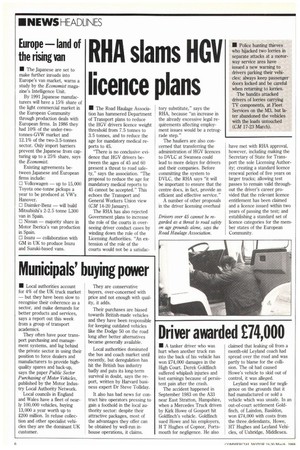Municipals' buying power
Page 8

If you've noticed an error in this article please click here to report it so we can fix it.
• Local authorities account for 4% of the UK truck market — but they have been slow to recognise their coherence as a sector, and make demands for better products and services, says a report out this week from a group of transport academics.
They often have poor transport purchasing and management systems, and lag behind the private sector in using their position to force dealers and manufacturers to provide highquality spares and back-up, says the paper Public Sector Purchasing of Motor Vehicles, published by the Motor Industry Local Authority Network.
Local councils in England and Wales have a fleet of nearly 100,000 vehicles, buying 13,000 a year worth up to 2200 million. In refuse collection and other specialist vehicles they are the dominant UK customer. They are conservative buyers, over-concerned with price and not enough with quality, it adds.
Their purchases are biased towards British-made vehicles and they have been responsible for keeping outdated vehicles like the Dodge 50 on the road long after better alternatives became generally available.
Local authorities dominated the bus and coach market until recently, but deregulation has hit the British bus industry badly and puts its long-term survival in doubt, says the report, written by Harvard business expert Dr Steve Tolliday.
It also has bad news for contract hire operators pressing to gain a foothold in the local authority sector: despite their attractive packages, most of the advantages they offer can be obtained by well-run inhouse operations, it claims.
















































































































